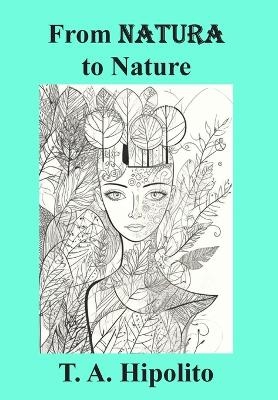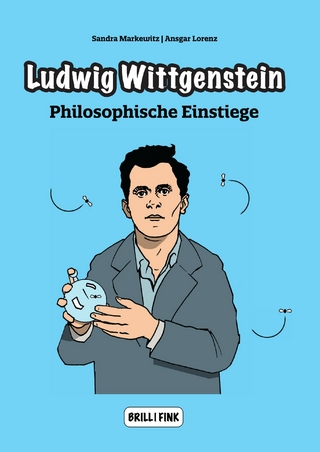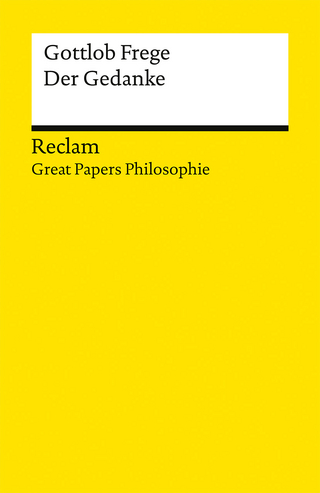
From Natura to Nature
How Love, Imagination, and Integrity Formed the Modern World
Seiten
2024
Academica Press (Verlag)
978-1-68053-347-7 (ISBN)
Academica Press (Verlag)
978-1-68053-347-7 (ISBN)
- Lieferbar
- Versandkostenfrei
- Auch auf Rechnung
- Artikel merken
Traces the career of the medieval goddess Natura – Mother Nature – as she influenced the literature of the High Middle Ages up to the time of William Shakespeare and Edmund Spenser. After that, Natura's medieval aspect morphed into the mathematics of the early modern era.
From Natura to Nature traces the career of the medieval goddess Natura – Mother Nature – as she influenced the literature of the High Middle Ages up to the time of William Shakespeare and Edmund Spenser. After that, Natura's medieval aspect morphed into the mathematics of the early modern era. The book's subtitle includes the terms Love, Integrity, and Imagination, subjects that complement Natura's well-known sponsorship of the phenomenon of romantic love. Imagination seems first to have been used in a philosophical sense by Alanus ab Insulis (Alain de Lille), who was also Natura's first devoted author and the apparent inventor of imagination in its quasi-modern sense; the modern history of imagination is well-known to anyone who has tackled Samuel Taylor Coleridge's philosophical prose. In Terry Hipolito's view, "integrity" can be ambiguous, and he attempts to encapsulate it in both moral and mathematical forms. He focuses on Dante, Chaucer, and two anonymous authors of English works, Pearl and Sir Gawain and the Green Knight, who fuse two meanings of integer, most notably here using symbolic numerals in their structure. Just as Shakespeare was concluding his career with his romances, a German work appeared, The Chemical Wedding of Christian Rosenkreutz. While in Shakespeare's last romances the heroes have become middle aged (to us) or old (to Renaissance audiences), in Rosenkreutz the numerical symbolism is, to any but a rococo taste, overdone. This was exactly the time when arithmetic ceased being symbolic and became overwhelming mathematical, as studies in logarithms, abstract algebra, and, finally, calculus put a definitive stamp upon what we still think of as modernity, and the analysis of categories became a unique feature of modernity. By the early twentieth century, calculus gave way to statistics. Even as Albert Einstein declared that God does not play dice with the universe, he nevertheless allowed that physics, chance, and statistics are the key to the subterranean life of matter. Nowadays quanta are bundled in mathematical objects which uncannily resemble the complex symbolic integers of old.
From Natura to Nature traces the career of the medieval goddess Natura – Mother Nature – as she influenced the literature of the High Middle Ages up to the time of William Shakespeare and Edmund Spenser. After that, Natura's medieval aspect morphed into the mathematics of the early modern era. The book's subtitle includes the terms Love, Integrity, and Imagination, subjects that complement Natura's well-known sponsorship of the phenomenon of romantic love. Imagination seems first to have been used in a philosophical sense by Alanus ab Insulis (Alain de Lille), who was also Natura's first devoted author and the apparent inventor of imagination in its quasi-modern sense; the modern history of imagination is well-known to anyone who has tackled Samuel Taylor Coleridge's philosophical prose. In Terry Hipolito's view, "integrity" can be ambiguous, and he attempts to encapsulate it in both moral and mathematical forms. He focuses on Dante, Chaucer, and two anonymous authors of English works, Pearl and Sir Gawain and the Green Knight, who fuse two meanings of integer, most notably here using symbolic numerals in their structure. Just as Shakespeare was concluding his career with his romances, a German work appeared, The Chemical Wedding of Christian Rosenkreutz. While in Shakespeare's last romances the heroes have become middle aged (to us) or old (to Renaissance audiences), in Rosenkreutz the numerical symbolism is, to any but a rococo taste, overdone. This was exactly the time when arithmetic ceased being symbolic and became overwhelming mathematical, as studies in logarithms, abstract algebra, and, finally, calculus put a definitive stamp upon what we still think of as modernity, and the analysis of categories became a unique feature of modernity. By the early twentieth century, calculus gave way to statistics. Even as Albert Einstein declared that God does not play dice with the universe, he nevertheless allowed that physics, chance, and statistics are the key to the subterranean life of matter. Nowadays quanta are bundled in mathematical objects which uncannily resemble the complex symbolic integers of old.
T. A. (Terry) Hipolito has a background in medieval literature, having received his Ph.D. in that subject from the University of California Los Angeles, and a career in software development and artificial intelligence. His amateur endeavors have included history and philosophy. He has attempted to unify all of these disciplines in a study of Rudolf Steiner's anthroposophy, which he believes endeavors to do much the same.
| Erscheinungsdatum | 05.04.2024 |
|---|---|
| Verlagsort | Bethesda |
| Sprache | englisch |
| Maße | 152 x 229 mm |
| Gewicht | 272 g |
| Themenwelt | Geisteswissenschaften ► Philosophie ► Logik |
| Geisteswissenschaften ► Philosophie ► Metaphysik / Ontologie | |
| Geisteswissenschaften ► Sprach- / Literaturwissenschaft ► Anglistik / Amerikanistik | |
| Geisteswissenschaften ► Sprach- / Literaturwissenschaft ► Literaturwissenschaft | |
| ISBN-10 | 1-68053-347-9 / 1680533479 |
| ISBN-13 | 978-1-68053-347-7 / 9781680533477 |
| Zustand | Neuware |
| Haben Sie eine Frage zum Produkt? |
Mehr entdecken
aus dem Bereich
aus dem Bereich
ein Gegenentwurf zum kurzfristigen Denken : so werden wir zu den …
Buch | Hardcover (2023)
REDLINE (Verlag)
CHF 27,90


